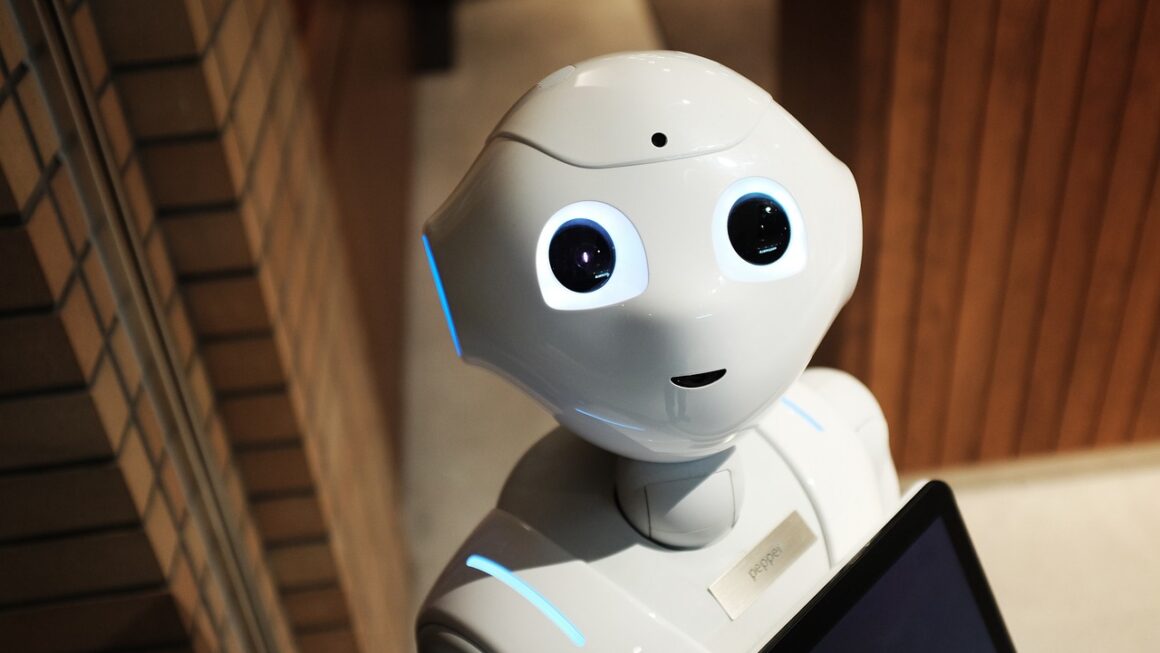The relentless march of artificial intelligence (AI) is no longer a futuristic fantasy; it’s the present reality, shaping industries, redefining workflows, and sparking both excitement and trepidation about what lies ahead. Understanding the trajectory of AI, its potential impact, and the ethical considerations surrounding its development is crucial for individuals, businesses, and policymakers alike. This post dives deep into the AI future, exploring its transformative potential and the challenges that need to be addressed.
AI’s Expanding Horizons
The Current State of AI
AI is already deeply embedded in our lives, powering everything from recommendation algorithms on streaming services to fraud detection systems in banking. Machine learning, a core component of AI, allows systems to learn from data without explicit programming. Deep learning, a subset of machine learning, utilizes artificial neural networks with multiple layers to analyze data in a more sophisticated way.
- Examples of AI in use today:
Healthcare: AI-powered diagnostic tools can analyze medical images with greater speed and accuracy, assisting doctors in early disease detection.
Finance: Algorithmic trading uses AI to execute trades based on complex market data, aiming to maximize profits.
Transportation: Self-driving cars are becoming increasingly sophisticated, promising to revolutionize transportation and logistics.
Customer Service: Chatbots provide instant customer support, handling simple inquiries and escalating complex issues to human agents.
Emerging Trends in AI Development
The future of AI is characterized by several key trends:
- Generative AI: Models like GPT-4 and DALL-E 2 can generate text, images, and code, opening up new possibilities for content creation and creative expression.
- AI Explainability (XAI): As AI becomes more complex, understanding how it arrives at its decisions is crucial for building trust and accountability. XAI focuses on developing techniques that make AI models more transparent and interpretable.
- Edge AI: Processing data on devices rather than in the cloud reduces latency, improves privacy, and enables AI applications in remote locations.
- AI Automation: Automating repetitive tasks can free up human workers to focus on more creative and strategic work. Robotic Process Automation (RPA) is one area where AI drives increased efficiency.
Impact on Industries
Transforming the Workplace
AI will significantly reshape the workplace, automating tasks and augmenting human capabilities.
- Potential Benefits:
Increased productivity and efficiency.
Reduced errors and improved accuracy.
Opportunities for workers to focus on higher-value tasks.
- Potential Challenges:
Job displacement in certain industries.
The need for workers to acquire new skills.
Ensuring fair and equitable access to AI-related opportunities.
- Example: In manufacturing, AI-powered robots can automate assembly line tasks, increasing production speed and reducing costs. However, this could lead to job losses for human workers who previously performed those tasks, necessitating retraining and upskilling initiatives.
Healthcare Advancements
AI has the potential to revolutionize healthcare, from diagnosis and treatment to drug discovery and personalized medicine.
- Examples:
AI-powered diagnostic tools: These tools can analyze medical images with greater speed and accuracy than human doctors, helping to diagnose diseases earlier and more effectively.
Personalized medicine: AI can analyze a patient’s genetic information and other data to tailor treatment plans to their individual needs.
Drug discovery: AI can accelerate the drug discovery process by identifying potential drug candidates and predicting their effectiveness.
Robotic surgery: Robots can perform complex surgical procedures with greater precision and less invasiveness than human surgeons.
The Future of Transportation
Self-driving cars, trucks, and drones are poised to transform transportation and logistics.
- Potential Benefits:
Increased safety due to reduced human error.
Improved traffic flow and reduced congestion.
Greater accessibility for people with disabilities.
Reduced fuel consumption and emissions.
- Potential Challenges:
Safety concerns and regulatory hurdles.
Job displacement for professional drivers.
Ethical dilemmas related to accident scenarios.
- Example: Autonomous trucks could revolutionize the logistics industry, enabling goods to be transported more efficiently and at lower cost. However, this could lead to job losses for truck drivers, requiring them to find alternative employment.
Ethical Considerations
Bias in AI
AI models can perpetuate and amplify existing biases in the data they are trained on, leading to unfair or discriminatory outcomes.
- Mitigation Strategies:
Carefully curating training data to ensure it is representative of the population.
Developing algorithms that are less susceptible to bias.
Regularly auditing AI models to identify and correct biases.
Job Displacement
AI-powered automation may lead to job displacement in certain industries, creating economic and social challenges.
- Potential Solutions:
Investing in education and training programs to help workers acquire new skills.
Exploring alternative economic models, such as universal basic income.
Creating new jobs in emerging AI-related fields.
Data Privacy and Security
AI systems often rely on vast amounts of data, raising concerns about data privacy and security.
- Best Practices:
Implementing robust data security measures to protect against unauthorized access.
Adhering to data privacy regulations, such as GDPR and CCPA.
Obtaining informed consent from individuals before collecting and using their data.
Preparing for the AI Future
Education and Upskilling
To thrive in the AI-driven future, individuals need to acquire new skills and knowledge.
- Key Areas of Focus:
Data science and analytics.
Programming and software development.
AI and machine learning.
Critical thinking and problem-solving.
Business Strategies
Businesses need to adapt their strategies to leverage the power of AI.
- Key Considerations:
Identifying opportunities to automate tasks and improve efficiency.
Investing in AI-related technologies and infrastructure.
Developing a workforce with the skills needed to work with AI.
Adopting ethical guidelines for the development and deployment of AI.
Policy and Regulation
Governments need to develop policies and regulations that promote responsible AI development and mitigate potential risks.
- Areas of Focus:
Addressing bias in AI.
Protecting data privacy and security.
Preparing for job displacement.
Promoting innovation and competitiveness.
Conclusion
The AI future holds immense potential for progress and innovation, but it also presents significant challenges. By addressing ethical considerations, investing in education and upskilling, and developing appropriate policies and regulations, we can harness the power of AI to create a more equitable, prosperous, and sustainable future for all. The journey into the AI future requires careful planning, proactive adaptation, and a commitment to responsible innovation. By embracing a forward-thinking approach, we can unlock the transformative potential of AI and shape a future where technology serves humanity.




